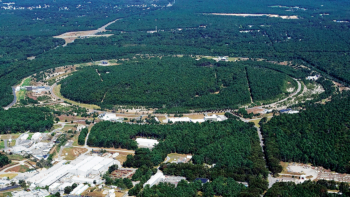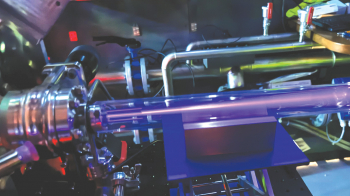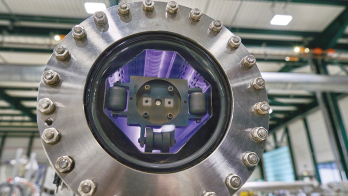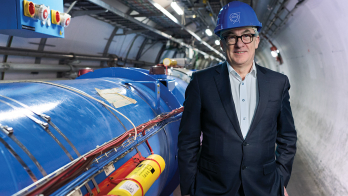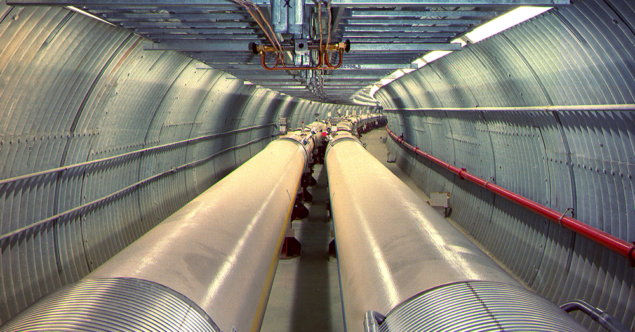
Brookhaven National Laboratory (BNL) on Long Island, New York, has been selected as the site for the planned Electron-Ion Collider (EIC). The decision, announced by the US Department of Energy (DOE) on 9 January, will see the laboratory’s Relativistic Heavy-Ion Collider (RHIC) reconfigured to include a new electron storage ring to facilitate electron-ion collisions. Scheduled to enter operation at the end of the decade, the new electron-ion collider will pivot BNL’s physics focus from the study of the quark-gluon plasma to nuclear femtography.
BNL has edged out competition to host the EIC from the Thomas Jefferson National Accelerator Facility (JLab) in Virginia, which boasts the recently upgraded Continuous Electron-Beam Accelerator Facility (CEBAF). Under the JLab proposal, CEBAF would have been augmented with a new heavy-ion accelerator. JLab is now expected to be a major partner in the project and take the lead in aspects of accelerator R&D. The project is foreseen to cost between $1.6bn and $2.6bn, with first physics planned in 2029 or 2030, following the completion of RHIC’s science programme at the STAR and newly upgraded sPHENIX experiments. “Our plan, working with the DOE Office of Nuclear Physics, remains unchanged,” says BNL’s associate laboratory director for nuclear and particle physics Berndt Mueller: “to complete the RHIC science mission by bringing sPHENIX into operation for three years of data taking.”
Nuclear femtography
EIC will perform precision “nuclear femtography” by zeroing in on the substructure of quarks and gluons in heavy ions using collisions with high-energy electrons, in a comparable manner to the seminal studies of the proton using electron-proton collisions at DESY’s HERA accelerator between 1992 and 2007. While HERA ran at a centre-of-mass energy of 318 GeV, the EIC will operate from 20 to 140 GeV. “The upper centre-of-mass energy limit is chosen to be sufficient for access to the predicted gluon saturation regime in electron-heavy nucleus collisions,” says Mueller, referring to the state known as a colour-glass condensate, a nonlinear regime of quantum chromodynamics where the rate of gluon recombination rivals that at which gluons are radiated. “The lower centre-of-mass energy limit is optimised for the three-dimensional imaging of quark and gluon distributions in the proton and other nuclei, which will utilise the much higher luminosity projected for the EIC compared to HERA,” continues Mueller. “If required by the evolving physics programme, the energy range of the BNL EIC could be raised in the future, for example by increasing the strength of the magnets in the hadron ring.”
The lower energy limit is optimised for the three-dimensional imaging of quark and gluon distributions
Berndt Mueller
The selection of BNL allows work to begin on EIC’s conceptual design, but is not a final approval, with the project still required to clear several hurdles relating to its design, cost and construction schedule. Meanwhile, a complementary project, the Electron-Ion Collider of China (EicC), which primarily targets sea quarks rather than gluons, is also moving forward, though on a longer timescale. The EicC garnered publicity in December with news that design work will proceed with a view to beginning construction at a new campus in Huizhou, in Guangdong province in southern China. First physics is foreseen towards the end of the next decade.
“This brings to conclusion the hard work over the last 20 years to make the case for an EIC, and gives for the community the signal to start finalising the design and construct the EIC over the coming years,” says BNL’s Elke-Caroline Aschenauer. “To finally have the opportunity to image quarks and gluons, and their interactions, and to explore the new QCD frontier of strong colour fields in nuclei – to understand how matter at its most fundamental level is made – is the best new year present one can imagine.”


